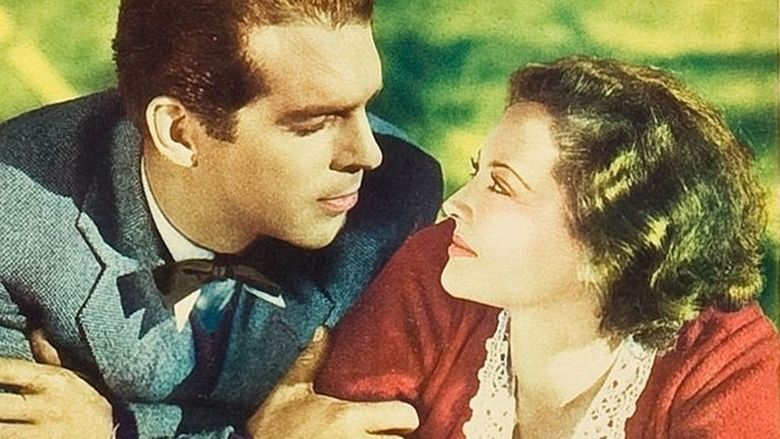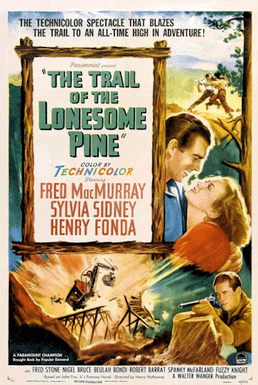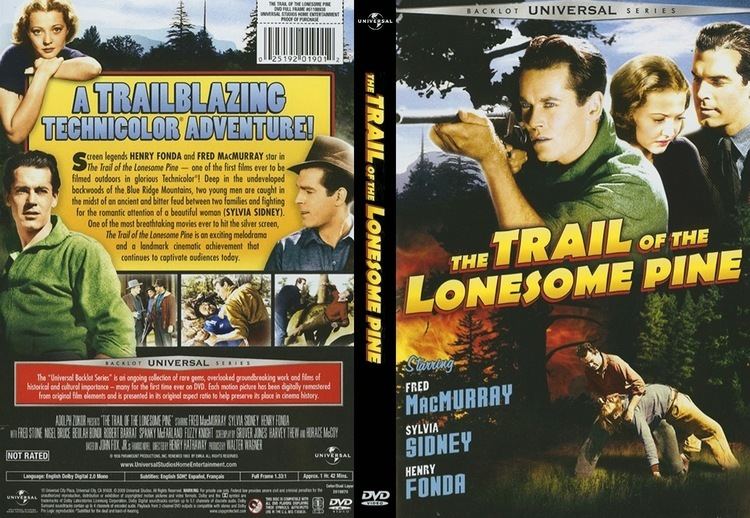The Trail of the Lonesome Pine (1936 film)
7 /10 1 Votes
Story by John Fox, Jr. Duration Country United States | 7/10 IMDb Genre Drama, Romance Language English | |||||||||||||||||||||||||||||||||
 | ||||||||||||||||||||||||||||||||||
Release date March 13, 1936 (1936-03-13) Based on The Trail of the Lonesome Pine by John Fox, Jr. Cast (June Tolliver), (Dave Tolliver), (Judd Tolliver), (Thurber), (Melissa), (Buck Falin) Similar movies Related Henry Hathaway movies | ||||||||||||||||||||||||||||||||||
The Trail of the Lonesome Pine is a 1936 American romance film based on the novel of the same name. It was directed by Henry Hathaway. It was the second full-length feature film to be shot in three-strip Technicolor and the first in color to be shot outdoors, with the approval of the Technicolor Corporation. Much of it was shot at Big Bear Lake in southern California.
Contents
- The true story of the trail of the lonesome pine
- Plot
- Cast
- Production
- Reception
- Awards and honors
- References

The Trail of the Lonesome Pine was the fifth feature film adaptation of John Fox, Jr.'s 1908 novel, including 1916 and 1923 silent versions.

The true story of the trail of the lonesome pine
Plot

A feud between Kentucky clans the Tollivers and Falins has been ongoing for as long as anyone can recall. After an engineer, Jack Hale, arrives with coal and railroad interests, he saves the life of Dave Tolliver, whose injury has developed gangrene.

Dave expects to marry a cousin, June, but she takes an immediate shine to the newcomer. Her younger brother Buddie is also impressed with Hale, who begins to educate him and take the boy under his wing. But others from both families do not give this outsider their trust.

Upset over the budding romance, Dave sets out after Hale with a rifle but is ambushed by the Falins. The latest round of violence causes June not to want to return home, so Hale sends her to Louisville to live with his sister.

A bridge is destroyed by the Falins, causing the accidental death of Buddie. A funeral is held and June returns, newly sophisticated from being in the big city. Family patriarch Buck Falin extends his apologies about her brother. Dave, however, is shot in the back by Wade Falin.

The families agree that the feud has gone too far. Hale is befriended by all, and will happily marry June.
Cast

Production
With principal on-location photography beginning in mid-October 1935 in Chatsworth, at Big Bear Lake (in the San Bernardino Mountains), and at the Santa Susana Pass in California, recreating the rural and mountain locale of the novel. The film was the first feature-length film to be shot in three-strip Technicolor on location.
Considered a technological success, The Trail of the Lonesome Pine was not the first film to utilize the new color process but integrated its use successfully, and was a harbinger of future developments. "The significance of this achievement is not to be minimized. It means that color need not shackle the cinema, but may give it fuller expression. It means that we can doubt no longer the inevitability of the color film or scoff at those who believe that black-and-white photography is tottering on the brink of that limbo of forgotten things which already has swallowed the silent picture."
Reception
The Trail of the Lonesome Pine received positive critical acclaim, with Frank Nugent of The New York Times considering the film as significant yet not without flaws. "Paramount's new film is far from perfect, either as a photoplay or as an instrument for the use of the new three-component Technicolor process," although "a cast of unusual merit and a richly beautiful color production" was its redeeming qualities. The movie made a profit of $522,620.
Awards and honors
Two original songs from the film, both written by composer Louis Alter and lyricist Sidney D. Mitchell and sung by Fuzzy Knight, gained national prominence. "A Melody from the Sky" was nominated for the 1937 Academy Award in the category of "Best Music, Original Song". The other song, "Twilight on the Trail", became a popular hit and eventually something of a classic. It inspired a 1941 cowboy movie of the same name and has been recorded by numerous country, pop, rock and soul singers.
"Trail of the Lonesome Pine" was recognized at the 1936 Venice Film Festival for a "Special Recommendation" for the use of color film.
References
The Trail of the Lonesome Pine (1936 film) WikipediaThe Trail of the Lonesome Pine (1936 film) IMDb The Trail of the Lonesome Pine (1936 film) themoviedb.org
